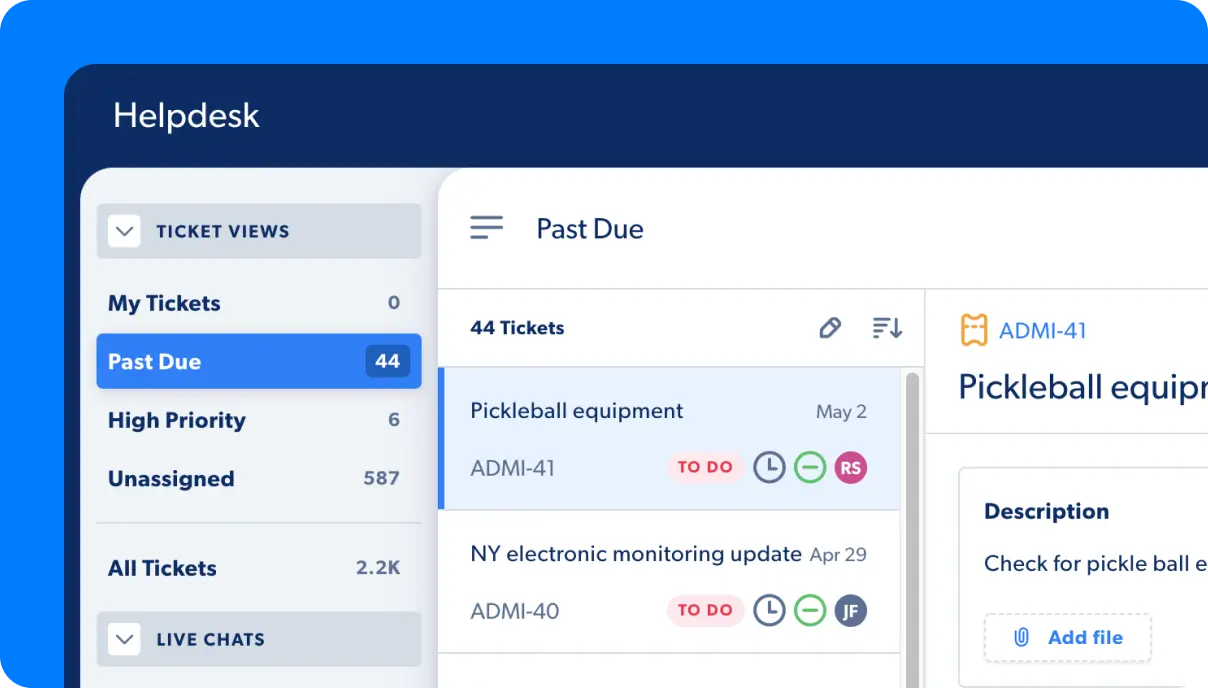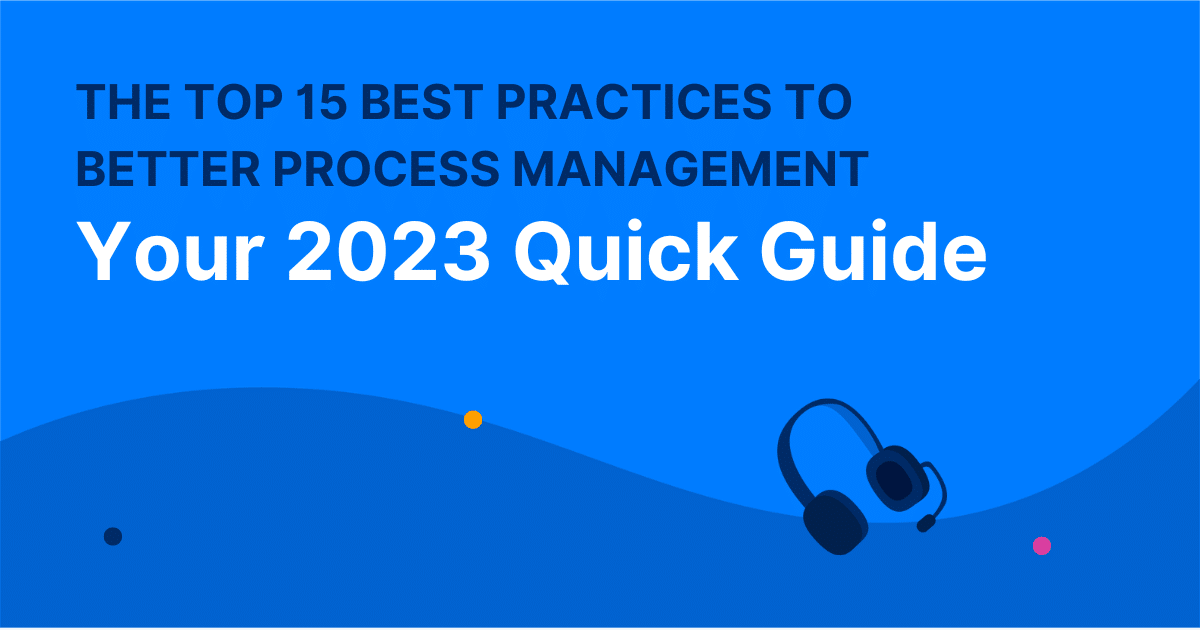Ensuring that your procedures are efficient, effective, and adaptable to change can mean the difference between stagnation and growth. This is where process management comes into play, serving as a vital strategy and approach in making your company’s workflow more effective, efficient, and adaptable to evolving circumstances. It involves identifying, analyzing, improving, and monitoring processes to optimize performance, meet customer demands, and achieve organizational goals.
Process management fosters a culture of continuous improvement. It encourages the regular evaluation and updating of processes to keep pace with market trends and technological advancements, ensuring the company remains competitive. It’s not merely a strategy but a philosophy that, when embraced, can transform how your company operates and propel it to new heights of success. In this guide, we’ll explore the concept of process management, its importance, its challenges, and a set of 15 best practices that can enhance process management within your organization.
Why your team needs strong processes and process management
Process management is the practice of aligning processes with your organization’s strategic goals, designing, monitoring, controlling, and even improving your processes to ensure they’re efficient and effective. In general, most employees spend 1.8 hours daily (9.3 hours a week) searching and gathering information. Process management eliminates this time suck by promoting efficiency, ensuring quality control, reducing errors, and fostering a culture of continuous improvement. Gartner reports that 95% of 150 business process management initiatives are successful.
It’s the art and science of making sure your operations run as smoothly as possible, from end to end. In essence, it gives your team a roadmap to follow, leading the way toward increased productivity, better client satisfaction, and, ultimately growth.
The challenges of dysfunctional process management
Without a strong process management system in place, your resources can be misallocated, leading to unproductive tasks and efforts. Instead of streamlining your operations and maximizing efficiency, ill-defined and poorly managed processes can lead to redundancy and waste, having a negative impact on your bottom line.
The problems don’t stop there. Dysfunctional process management can foster an environment of low productivity and frequent errors. When processes are unclear or overly complicated, your employees may struggle to perform their tasks effectively, leading to mistakes and decreased output. Furthermore, poor process management often results in subpar service deliveries. This inconsistency not only strains customer relationships but can also tarnish your company’s reputation in the marketplace. These repercussions underscore the vital importance of strong and effective process management.
Similarly, Forrester reports that BPM projects can deliver between 30-50% productivity gains.
15 best practices for better process management in your organization
1. Clearly define processes
The first step to effective process management is to have a clear understanding and definition of each process. You need to know what each process entails, its start and end points, its objectives, and the required resources.
2. Document processes
Once you’ve defined your processes, document them. Detailed process documentation serves as a reference guide for your team, ensuring everyone understands the processes and can follow them consistently.
3. Standardize processes
To ensure consistency and efficiency, standardize your processes. Standardized processes mean everyone does tasks the same way every time, reducing the likelihood of errors and ensuring consistency in service delivery.
4. Streamline processes
When you streamline a process, you remove unnecessary steps, simplify tasks, and reduce redundancy, making the entire process more efficient and straightforward. This not only saves valuable time and resources but also reduces the likelihood of errors and inconsistencies. Streamlining processes enhances clarity for your team, making it easier for them to understand their roles and responsibilities and thus improve their productivity.
5. Automate tasks
Task automation provides a clear, repeatable process that can be monitored and refined over time, further enhancing efficiency. It ensures that resources, both human and technological, are optimally used, translating into cost savings and higher ROI.
6. Implement workflow management systems
These systems provide a structured interface for organizing and tracking all components of your processes, from initiation to completion. They allow for real-time visibility into work progression, making it easier to spot bottlenecks, redundancies, or inefficiencies. Additionally, they facilitate better communication and collaboration across teams, leading to more coordinated efforts and reduced time wastage. Workflow management systems also enhance accountability and transparency as each task within a process is mapped out clearly with defined roles and responsibilities.
7. Assign clear responsibilities
When roles and responsibilities within a process are well-defined, it eliminates ambiguity, fosters accountability, and ensures that every task is undertaken by the most suitable individual or team. This clarity not only increases efficiency but also improves the quality of output, as everyone knows exactly what they need to do and how their work contributes to the broader process. Assigning clear responsibilities is not just about enhancing individual performance but is key to optimizing the entire process and driving overall organizational effectiveness.
8. Foster collaboration
Collaboration brings together diverse perspectives, skills, and experiences, driving innovation and problem-solving within processes. It ensures seamless information flow and coordination among your teams, eliminating silos that can hinder process efficiency. Moreover, a collaborative culture cultivates collective ownership of processes, leading to greater engagement and productivity.
9. Continuous improvement
Embrace a culture of continuous improvement. Regularly review your processes, identify areas of improvement, and take necessary actions. Remember, process management is not a one-time task but an ongoing effort.
10. Set key performance indicators (KPIs)
KPIs provide quantifiable measurements that help assess the efficiency and effectiveness of your processes. They serve as a compass, guiding your team toward the desired outcomes by highlighting areas of success and pinpointing where improvements are needed. With KPIs, you can track progress, measure results, and adjust your strategies to ensure that your processes align with your organization’s overall goals.
11. Monitor performance
Monitoring performance provides a clear understanding of your processes’ functioning in real-time, helping to identify any issues or bottlenecks early on. Regular monitoring allows you to track progress against set Key Performance Indicators (KPIs), ensuring your processes are aligned with your organization’s strategic objectives.
12. Provide training and development
Regularly train your team on process management best practices. Training enhances skills, ensures everyone understands the processes, and fosters a culture of continuous improvement.
13. Encourage innovation
Encouraging innovation involves fostering a culture where new ideas are welcomed and explored, often leading to improved ways of executing processes. Embracing innovation can result in more efficient, effective, and adaptable processes that can give your company a competitive edge.
14. Implement risk management strategies
Implementing risk strategies involves identifying potential threats that could disrupt your processes and devising strategies to mitigate these risks. Effective risk management not only safeguards your processes from unexpected disruptions but also enhances their resilience and adaptability. This is crucial for maintaining the stability, continuity, and efficiency of your company’s processes.
15. Foster a culture of continuous learning
A continuous learning culture drives process innovation, improves efficiency, and enhances adaptability to change. Therefore, such a culture is crucial for maintaining process relevancy and ensuring long-term organizational success.
Remember, effective process management is not about perfection; it’s about continuous improvement. It’s a journey that requires commitment, effort, and dedication to excellence. You can help your company reach new heights of efficiency and success.

Automate Your Work
Capacity’s enterprise AI chatbot can help:
- Answer FAQs anytime, anywhere
- Find relevant documents within seconds
- Give surveys and collect feedback














































